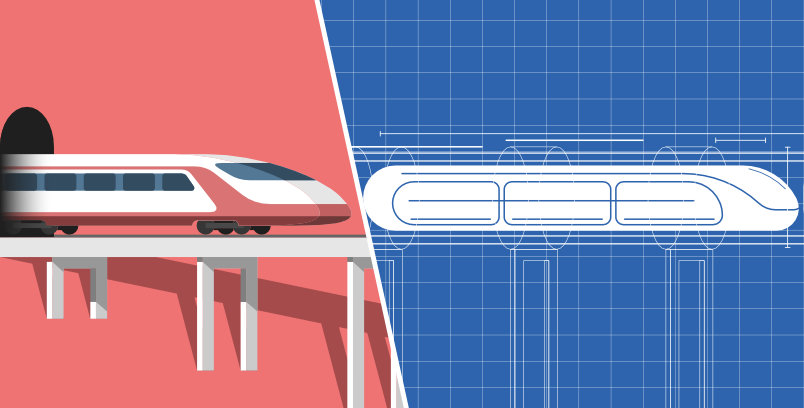Innovations in Transportation and Future Economies
- Innovations in the mobility sector will play a vital role in the evolution of emerging economies.
- Developing countries need to find the right balance between affordability, accessibility and environmental costs.
- Public-private partnerships to provide sustainable mobility solutions for nations.
Mobility sector is not a monolith. In an economically divide world, stakeholders of the mobility sphere are often grappling with extremes driven by the demands of the populace, available infrastructure and a nation’s spending power. Therefore, innovations in this sector vary wildly between the developed and developing nations.
That being said, some trends are driven by global demands and so the mobility sector is looking for sustainable, reliable, cheaper, and faster modes of transportation. But how they are looking to achieve these goals is the point of differentiation.
Breakthrough Work
From Tesla’s driverless cars to Virgin’s progress on Hyperloops and Toyota’s foray into hydrogen fuel cells, giant leaps in mobility technology are made every day. These forays make possible solutions that have until now have only existed in the realm of possibilities.
Virgin’s push into Hyperloop is projected to revolutionize not only rail but transportation as a whole. Thought to be safer than any current mode of transit, immune to weather, and earthquake resistant because the pod moving in a vacuumed tube is suspended by a magnetic field on the track. WhiIe Virgin did the first human test of hyperloop in late 2020, the technology is not expected to be commercialized until the end of this decade. First Virgin Hyperloops are likely to appear in India and the Middle East, perhaps between Dubai and Abu Dhabi.
Much earlier than the likely appearance of Hyperloop tubes, the speed, capacity and lack of latency in fully deployed 5G systems is expected to accelerate the birthing of autonomous vehicles. Intel-Mobileye intends to test highly automated cars in New York’s public streets this current year.
With shortages for lithium and cobalt on the horizon, the move towards low- or zero-cobalt batteries is a welcome one for the EV sector and the environment. While, Panasonic, Nissan Motors, and Tesla revealed plans to start using cobalt-free EV batteries in the next few years, China’s SVOLT unveiled the world’s first series production cobalt-free battery at the 2021 Chengdu Motor Show.
Cobalt is one of the most expensive raw materials used in the EV production process. By doing away with the metal, EV-makers will be able to produce vehicles that are a third of the current price.
This is good news for the emerging economies where adoption of these breakthrough technologies has primarily been difficult due to costs.
Electrification – A Challenge and an Opportunity
The Electric Vehicle market was one of the fastest-growing segments, with over 10 million electric cars on the roads in 2020. China alone has put about 5 million EVs on the road in a decade. Developed nations are speedily heading towards electrified mobile future.
The road has been bumpier for developed nations mainly because of
- Cost of EVs & batteries.
- Lack of proper government policy on EV’s & its promotion.
- Lack of standards, rules, and regulations for vehicles & emissions.
But more and more developing nations are looking to adopt EV technology along with renewable energy generation not just for the sake of environment but also for costs savings it generates in the long run. A good example of this is the Pakistan government’s EV policy that envisions converting 30% of passenger transport and 90% in heavy-duty trucks into EVs by 2030 and 2040 respectively.
Push towards electric and hybrid mass transit systems in emerging economies is also happening but more EVs on the roads does not resolve the road congestion or the lack of access to transport services, which is the case for over a billion people around the world.
It is here that innovations in mobility such as platforms that provide mobility as a service have filled a gap.
MAAS – A Clear Opportunity
MAAS or mobility as a service concept is helping shift the transport landscape not just in the developed world where this model is used to primarily to share available assets like an empty seat in the car. In emerging economies, this technology is actually being used by individuals as an economic tool to lift themselves out of poverty either by increasing their reach to jobs or allowing them to make money by delivering goods for other businesses or by chauffeuring people. Also in emerging markets the population is much younger who either don’t own vehicles because of economic reasons or are environmentally conscious and therefore, disinclined to own a vehicle.
The need-driven innovation in this arena has helped make MAAS businesses some of the fastest growing businesses in South Asia, Latin America and Africa that have attracted huge investor interest.
Some governments are also subsidizing ride-sharing companies to bring people from outlying areas to transit hubs. Cities are hiring MAAS providers to operate ticketing systems, while rural authorities are partnering with them to serve outlying areas.
This cooperation between the public and private sector is likely the catalyst that emerging economies need to not only overcome their resource deficits but also leapfrog ahead.
Road Ahead
Mobility is a key driver of economic growth. Nations that will adopt these innovations quickly and thoughtfully will truly benefit from the efficiencies they provide. So while future is constantly evolving, one thing is for certain that no matter where you live in the world, the future of mobility is shared, connected and sustainable.
